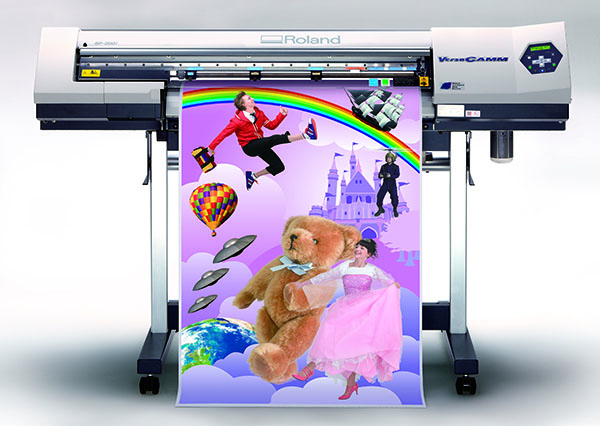3 Simple Techniques For Digital Printing
3 Simple Techniques For Digital Printing
Blog Article
6 Simple Techniques For Digital Printing
Table of ContentsThings about Digital PrintingThe 6-Minute Rule for Digital PrintingAn Unbiased View of Digital PrintingThings about Digital PrintingExamine This Report on Digital PrintingWhat Does Digital Printing Do?Little Known Questions About Digital Printing.Unknown Facts About Digital Printing
Personalization also enables businesses to attract attention in a jampacked market by developing one-of-a-kind marketing materials that distinguish them from their competitors. Among the primary benefits of digital printing is the ability to print variable data. Each printed piece can be one-of-a-kind, permitting companies to produce individualized marketing materials that talk directly to their target audience.Digital printing likewise enables for personalization in the design of marketing materials (Digital Printing). With digital printing, organizations can produce styles that are distinct and tailored to their certain requirements.
The smart Trick of Digital Printing That Nobody is Talking About
By printing smaller sized quantities of marketing products, businesses can decrease waste and stay clear of the need for excess inventory. Digital printing is likewise flexible.
By utilizing different materials and styles, companies can produce distinct advertising materials that stand out from their rivals and bring in interest from their target audience. Digital printing likewise provides consistency. With traditional printing techniques, there is commonly variant in between prints as a result of distinctions in ink coverage, pressure, and other variables.
This uniformity can help develop customer trust and reliability, showing that business is committed to supplying top notch materials. Uniformity is specifically vital for services that desire to develop client count on and credibility. By guaranteeing that every print corresponds, organizations can reveal that they are devoted to providing top notch materials and focusing on the details.
The Definitive Guide for Digital Printing

Additionally, digital printing generates less waste due to the fact that it can print as needed and in smaller amounts, decreasing the demand for excess stock and materials. Digital printing additionally uses less energy compared to traditional printing methods. Digital printers do not call for as much power to operate, as they do not need to heat up as much or use as much power to run.
Digital Printing - The Facts

Balanced out printing calls for a plate for every shade published. Typical offset printing is a print technique that makes use of aluminum plates to transfer ink onto a rubber sheet (usually referred to as a "covering"). The image is after that rolled onto the printing surface area. This printing method is taken into consideration "balanced out" due to the fact that the ink is not moved to the paper directly.
What Does Digital Printing Mean?
Offset printing allows for a broad range sites of print products to be utilized throughout production. The top quality photos created via offset printing make it the recommended technique, especially amongst visuals developers, when seeking the biggest shade recreation, detail, and professional-looking prints.
The basic printing technique remains countered. For digital inkjet printing, ink is moved straight onto the surface. As opposed to relying upon aluminum plates and rubber blankets to transfer an image, digital printing makes use of fluid ink during production. Traditional home inkjet printers are just one of one of the most common electronic printing approaches.
The Definitive Guide for Digital Printing
Much better color integrity refers to both the precision of the shades and their balance in the layout. Because countered printing can mix custom shade inks for each task, it will normally get the colors spot-on. Functions equally well on almost any kind of kind of material. Trusted, remarkable image high quality. Count on countered printing for tidy, distinct kinds and photos without streaks or spots.
It costs a whole lot to begin an offset task. You have to invest cash right into producing home plates, which takes some time. However, when you have actually invested it, every one of the products are ready to go, and you'll spend my website much less on huge balanced out work than a digital print, which is about the very same per piece no issue how large the task obtains.
Digital printing is much less expensive for low-volume jobs. The cost per system goes down for electronic printing, so at some point, they crisscross. Transforming info within a single print task.
How Digital Printing can Save You Time, Stress, and Money.
While electronic printing or inkjet printing see here now is the preferred option in the existing times, there are compelling factors to transform from offset to electronic printing systems. When printing countered or digitally, critical decisions and procedures are included in color matching.
Industrial inkjet printing uses adaptability for printing on lots of various substrates. Digital printing is suitable for customers that do not need longer runs and warehousing products.

One advantage of electronic printing is picking from a wide array of electronic substrates. With digital printing, the price of the substratum in the total task is small.
The Ultimate Guide To Digital Printing
drop-on-demand is the second printing technology to consider. Continual inkjet systems call for considerable maintenance, more operator training, and higher downtime. Devices prices in inkjet printing are much reduced than balanced out printing as there are no plate-making, plates, and press costs. Beyond the capital expenditure, the prepress equipment and printing presses need highly proficient operators in balanced out printing, which adds labor expenses.
Report this page